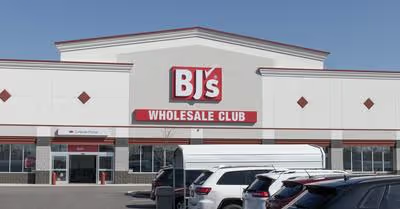Table of Contents
Start by Looking at What You're Paying for Now
Some people indeed believe that aging in their homes and the accompanying costs are worth it and non-negotiable. But even with that, aging in your home will require you to pay various bills including property taxes, utilities, insurance, and mortgage. That's not all; you'll have to budget for other things such as groceries, entertainment, healthcare costs, and travel expenses.
If you add all the costs that come with aging in your home, you'll realize that they are probably much higher than what you'd pay living in a senior living community. Well, this is because a huge chunk of your daily and ordinary expenses are already included in your monthly fee. In a senior living community, you'll enjoy various amenities such as laundry and housekeeping services, happy hours, educational workshops, ice cream socials, and many other fun-filled activities in the company of people who love doing the same things as you. There are also on-campus amenities such as swimming pools, transportation services, beauty and barber shops, golf courses, and many more.
So before insisting on aging in your home, it's vital to explore the idea of retiring in a senior living community, and this will, of course, require you to research the costs of living in a senior community. You shouldn't have a preset mind that senior living is expensive. If anything, you should add up your monthly expenses and may be surprised to find out that the costs of senior living are much lower than your monthly expenses in your home.
Staying at Home vs. the Cost of Senior Living
The decision to move into senior living is, without a doubt, a huge one. It's important to do your research and weigh all the advantages and disadvantages of senior living. This means that you'll always be comparing it with staying at home and probably asking yourself several questions. Should I stay at home? Is it the right time to move into senior living? Can I afford it?
With that in mind, let's look at the costs associated with each, as well as the pros and cons so that you can make an informed decision.
Staying at Home
The decision to move into senior living ultimately comes down to the cost. Of course, it will be impossible to move into a senior living community if you can't afford it. But even if you can afford it, you may have to take into consideration other factors such as the independence of indulging in activities that you love or even eating what you love eating.
Unfortunately, many people wrongly presume that staying at home is always free as long as the mortgage is paid off. Well, several expenses come with staying at home. From home insurance, taxes, groceries, transportation to property maintenance and repairs, the list of expenses is endless. And even though moving into a senior living community will cost money, so does staying at home.
Known as aging in place, staying at home will cost you almost twice as much as moving into senior living, especially if you require living or medical assistance. Here are some of the costs that you may have to deal with.
Rent and Mortgage
Rent and mortgage is by far the most expensive part of staying at home. Whether you're renting the property or living in your home, staying at home is never free. While the average rent in the U.S. is about $1,200 per month, you could still have to spend about $1,000 monthly when staying in your home and this may depend on whether or not you've paid off your mortgage. This cost could be even higher if you include property taxes and HOA fees.
Utilities
There are some little things that we often take for granted in our homes but they're always costly. You'll, of course, have to keep the water running, the lights on, and the house heated. These are utility bills that may amount to $500 monthly.
Groceries
Needless to say, you certainly can't go without food. We all have different tastes and preferences when it comes to food. Generally, $250 can be enough to feed one person in a month. There may be additional expenses if you have to go to the grocery store, bring back the groceries, and cook your meals.
Transportation
Like grocery bills, transportation costs may vary depending on whether you use public transportation or have a personal vehicle. If like most Americans, you drive your own vehicle, transportation may cost about $250 a month. The cost can be even higher if you take into account other things such as changing the oil, new tires, and maintenance services.
As you can see, these costs add up to nearly $2,200 a year and these are just necessities. If you add other things such as entertainment, housekeeping, and other unexpected expenses, the costs of staying at home could be a lot higher.
Staying at Home will infringe on Your Independence
One of the main advantages of aging in place is the familiarity of your house. On the contrary, there are several disadvantages of aging in place. Many senior citizens would love to have more independence and more fulfilling life in their golden years. Unfortunately, aging in place may not offer what you want as far as your independence is concerned.
Aging in place means that you'll have to leave the comfort of your home to visit friends, interact with your age mates, take classes, or participate in other communal activities. But because aging can limit your ability to drive, you may become a prisoner in your own home, especially if you can no longer drive. It would mean that you become dependent on public transportation, family members, or senior services to take you wherever you want and this can inconvenience other people.
Again, your home may not be suitable for the challenges of aging. For example, the concrete floors, staircases, gardens, and pointed sidewalks may be risky for the elderly. And because falls are among the leading causes of death among the elderly, your home may pose danger to your life if it's not set with an elderly person in mind.
These are just some of the negative issues that may affect you if you decide to age in place. It may be difficult to put a tangible value on these factors but they may affect the value of your life. Alternatively, finding a good senior living community within your budget will not only offer you more options but will also offer a more vibrant life.
So if you're comparing between aging in place and moving into a senior living community, you may want to ask yourself the following questions if you're already contemplating aging in place.
- How safe is my home?
- How can I easily access various social activities, especially if I cannot drive?
- What are the probable medical and financial repercussions of aging in place should I get injured?
- Will my home require major repairs in the next few years?
- What level of in-home care will my insurance policy cover?
Independent Senior Living
Independent living is a perfect option if you're looking to enjoy the freedom of enjoying your retirement without the hassle of having to clean, cook, and maintain a home. This is some sort of a vacation-style and carefree setting that allows you to do more of the things that you'd love to do in your old age.
Besides the benefits that come with independent senior living, there are several benefits of senior living. Generally, senior living comes with a set price so that you know exactly what you're required to pay at the start of the year. More importantly, many senior living communities provide nearly everything for the residents. In addition to proper nutrition, there are exercise and entertainment programs, as well as onsite healthcare.
This may be hard to believe but the costs of living in a senior living community may not fluctuate as much as the costs of living in your home. The fact that you'll not have to deal with unexpected costs such as home repairs ensure that you can easily budget for the costs of living in a senior community. This is perfect for most seniors, especially when taking into account that they're on fixed budgets.
Again, senior living communities are designed in such a way that they're perfect for senior citizens. In addition to the wide hallways, the lighting of these communities is designed in such a way that they're ideal for seniors' eyes. There are also elevators, high contrast carpet, and other things that may make life more enjoyable and a lot easier for the seniors.
Let's look at some of the costs that you may have to deal with in a senior living community.
Service Rate and Rent
The cost of service and rent that you may have to deal with in a senior living community will generally depend on the service level you require and the type of apartment you'd like to live. In other words, the basic monthly rate and rent that you may have to pay may depend on the level of luxury you want. In addition to a one-time fee that ranges between $500 and $1,000 community fee, most of these apartments will cost anywhere between $2,300 and $3,500 a month.
Food
You'll have your meals prepared for you in a senior living community. Most of these meals are delicious, healthy, and are served in a wide range of options. The idea here is that residents will not raise a finger to prepare the meals. Instead, all they have to do is lift the forks and enjoy the meals.
Utilities
Utilities are included in the costs, so you don't have to worry about it.
Transportation
Like utilities and food, you won't have to worry about transportation to local routine destinations such as visits to the doctor or the local shopping center.
Other things such as laundry, housekeeping, cultural programs, and other amenities are all included in the general senior living costs. In essence, senior living is designed to provide everything that you need to enjoy your golden years, grow, and improve your well-being.
When choosing to move into a senior living community, some of the questions that you may want to be answered include:
- What types of amenities are included in the base cost?
- What are the available meal plans?
- What level of care and assistance is included in your package?
- Are there additional or hidden fees that you may be required during your stay?
The Cost of Each Senior Living Option
The cost of senior living may vary depending on several factors such as the amenities provided and the geographic location. However, the most crucial variable is the level of care provided to you as an individual. This is why it's important to look at each care level and how much you may be required to pay to access them.
Independent Living Costs
As we've noted numerous times in this article, independent living often offers a great experience for seniors. The best part of moving into independent living is that you'll have almost everything done for you. You'll, therefore, have a lot of time to have fun, socialize, and engage in various enjoyable activities. You'll also have ample time to pursue other interests.
And even if you're an active senior, you may want somebody else to prepare your meals, do your laundry, and housekeeping. Generally, the monthly costs for independent living may range between $800 and $7,500 but this, of course, depends on the location of the community and the services offered.
Assisted Living Costs
You may be thinking of moving into an assisted living community if you have certain needs that may call for the need for 24-hour assistance. The level of care, room size, amenities, and location may affect the cost of assisted living. Generally, the average monthly costs may be about $4,000.
Keep in mind that the level of care may affect these costs. For example, you may pay less if you do not require any specialized care. On the other hand, residents who require specialized care such as verbal reminders and assistance with dialing activities such as bathing. The costs can increase significantly if the individual requires hand-on care such as help with feeding and moving around.
Memory Care Costs
When choosing the right memory care for you, several variables are considered in determining the costs. The costs may vary depending on various factors such as the type of care needs, location, and living accommodation.
Generally, these communities will carry out a personal service assessment to help them create a care plan that suits your individual needs. And because the cost may largely depend on your particular care needs, it can be challenging to determine the final cost until the personal service assessment is carried out. Nevertheless, memory care costs usually range from $300 to $6,000 per month.
CCRC Costs
One of the most important things to keep in mind before moving into a Continuing Care Retirement Community (CCRC) is that it offers several types of CCRCs. Some types of CCRCs will provide more services than others and the costs may depend highly on the type of services offered. So in addition to factors such as location and floor plan, the CCRC costs may depend on the service plan that you choose.
Skilled Nursing Costs
Depending on your condition, you may have to pay for skilled nursing to take care of your needs. Skilled nursing is generally meant to help you get back to your normal life as an active senior. Again, these costs are difficult to determine as there are a lot of different services offered. Whether you're looking for round-the-clock care, physical therapy, or help with occupational therapy services, skilled nursing is meant to help you get back to the life you want and maybe covered through private health insurance, personal funds, long-term care insurance, or Medicare.
How to Choose the Perfect Senior Living Community for You
Even though several benefits come with moving into a senior living community, there's no one-size-fits-all senior living community especially as far as the costs are concerned. The best thing to do is to plan and carry out thorough research. This will help you find a perfect senior living community based on your specific needs.
Here are a few things to consider when looking for an ideal senior living community for your individual needs.
Evaluate Your Finances
You'll be required to pay your monthly fees to cater for meals, rent, utilities, and other expenses. As such, it's vital to come up with a budget. This will help determine how much you can afford to spend. This will in turn determine the type of senior living that you can afford. You should also set money aside to help you cover your medical expenses and other expenses.
Ask for Recommendations from Friends and Family
Your friends and loved ones will be willing to help you through the process of finding an ideal senior living community. You should, therefore, include your friends and family members in your search. Ask for their recommendation and you'll be better equipped to find an ideal senior living community that's within your budget.
Have an Idea of Where You Want to Go
Do you want to live in a city where your friends and loved ones will easily visit you? Are you looking to retire in a quiet but vibrant neighborhood or do you want to retire in a small rural town? It's important to at least have an idea of where you want to retire. You should keep in mind that location may play a major role in the cost of senior living.
Research on Each Senior Living Community
If you've narrowed down on a few senior living communities that you think might be ideal for you, you can perform research of these specific senior living communities. Of course, senior living communities have websites where you can learn more about them. You can also look at the online reviews of these communities and find out if they might be perfect for your needs. You can contact these communities and ask several questions. Better still, you can visit these communities in person just to find out if they're appropriate for you. `
Come up with a Senior Living Search Criteria
The most important thing is to take into consideration the type of services and support you'll need in a senior living community. You should create a checklist of both your current and projected support and services that you may need. This checklist will help you tailor your search per your needs and requirements.
Is the Cost of Senior Living Worth It?
The cost of senior living ranges from $1,500 to $6,000 per month but may even cost more at the highest end of the spectrum. In most cases, the costs will be a lot higher in bigger cities such as New York and Seattle and may rise depending on the luxury level in place, the amenities on offer, and the level of care required.
As such, these costs are certainly worth it but there may be several factors in play. More importantly, it's vital to work within your budget while also thinking about both your current and long-term care needs.
Recent Articles
















